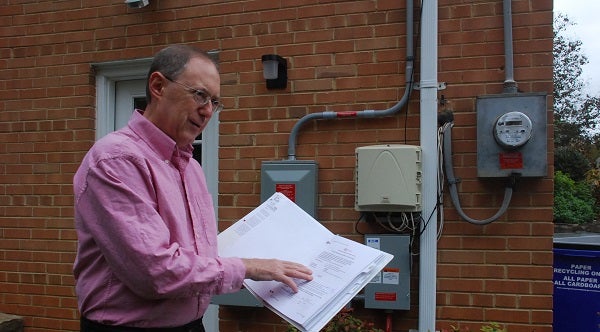Department of Energy report: Renewables are not the enemy

A new study from the Department of Energy (DOE) provides further evidence that distributed solar energy integrates well with the electric grid and that solar owners do not impose a negative impact on non-solar owners. The report, released on in August, examines the reliability of America’s energy grid. It was prepared at the behest of newly-appointed Secretary of Energy Rick Perry. The study concluded that wind and solar – which the document refers to collectively as “VRE” – have little if any negative effect on the grid’s reliability, and may very well have a positive effect on its flexibility. The other is that the authors of the study appear to doubt (though they don’t say so outright) that net metering has any negative effect on energy affordability for customers who have not adopted solar power. The report is heartening news for solar supporters, given the concerns about the reason for the report.
A memo from Secretary Perry requesting the study leaked in April. The memo stoked widespread fears that Perry was attempting to create a prejudged report that would pin the blame for renewable energy real or imagined flaws in the nation’s electrical grid. Perry’s memo seemed to imply that he, like the President, favors coal and is skeptical about renewables. He wrote of past regulations designed to reduce coal-fired power generation, “Such policies have destroyed jobs and economic growth, and they threaten to undercut the performance of the grid well into the future.” He added, “analysts have thoroughly documented the market-distorting effects of federal subsidies that boost one form of energy at the expense of others”. This is a not-so-subtle dig at the solar federal income tax credit. There were also troubling hints from a top DOE official that, in order to “save” grid reliability, the federal government might overrule state renewables mandates on grounds of national security. Later Perry said through a spokesperson that he would respect state energy policies.
The DOE study takes a positive view of the impact of renewable energy on the grid. “Numerous technical studies on electricity systems in most regions of the Nation have concluded that significantly higher levels of VRE can be successfully integrated without compromising resource adequacy (p. 151).” Further, and in contrast to Perry’s remarks, the study suggests that coal power is becoming increasingly obsolete, an inflexible source of power in an energy landscape in which flexibility is key.
The study identifies three types of generated energy used by the grid: a) baseload generation, which is the minimum power needed to sustain the grid, provided now mostly by coal; b) flexible generation to handle peak loads, provided mostly by natural gas at present; and c) VRE. The study then describes the increasing emphasis that grid operators in some regions are placing on the combination of natural gas and renewables as more flexible than coal. It concludes, “These factors, among others, have collectively lessened the immediate need for traditional baseload resources [i.e., coal] in certain regions (p. 7).” In other words, natural gas and renewables together have made coal less essential.
The report notes that concerns about alleged “cost shifting” have led public utility commissions in some states to tamper with or try to eliminate net metering. But it also observes that “some studies have quantified the retail rate impacts of net metering to all residential customers (i.e., participants and non-participants) and found that current and projected levels of net metering have very little impact [emphasis ours], especially compared to broader drivers of retail rate increases in the electric industry (p. 125).” The relevant study to which the document refers in a footnote to the preceding passage is Putting the Potential Rate Impacts of Distributed Solar into Context, sponsored by the federal government and released by the Lawrence Berkeley National Laboratory in January. This study concludes that “For the vast majority of states and utilities, the effects of distributed solar on retail electricity prices will likely remain negligible for the foreseeable future [emphasis ours].” (See page 29 of the Lawrence Berkeley study.)
Finally, one of the DOE document’s policy recommendations is, “focus R&D on improving VRE integration through grid modernization technologies that can increase grid operational flexibility and reliability (p. 126)”. This passage appears to be an acknowledgement by the agency that renewable energy is here to stay, and that grid infrastructure must be modernized to accommodate it.
Many people have claimed that the DOE study contains nothing new. But, it could be argued that that’s precisely what’s important about it. Its existence means that an internal document by the government agency most crucial in shaping energy policy has now affirmed the same facts about renewable energy’s relation to the grid – and exploded some of the same myths – as previous energy studies by both nonprofits and government laboratories. For the time being, Perry is understandably preoccupied with the aftermath of Hurricane Harvey, which deprived over 300,000 Texans, at some point, of electric power – proof, if anybody needs it, of how vital a properly functioning electrical grid is to Americans. The question is whether he will accept the truths about renewable energy affirmed by the study, or will enact policies that reflect the opinions expressed in his earlier memo, ignoring the work of his own staff.
